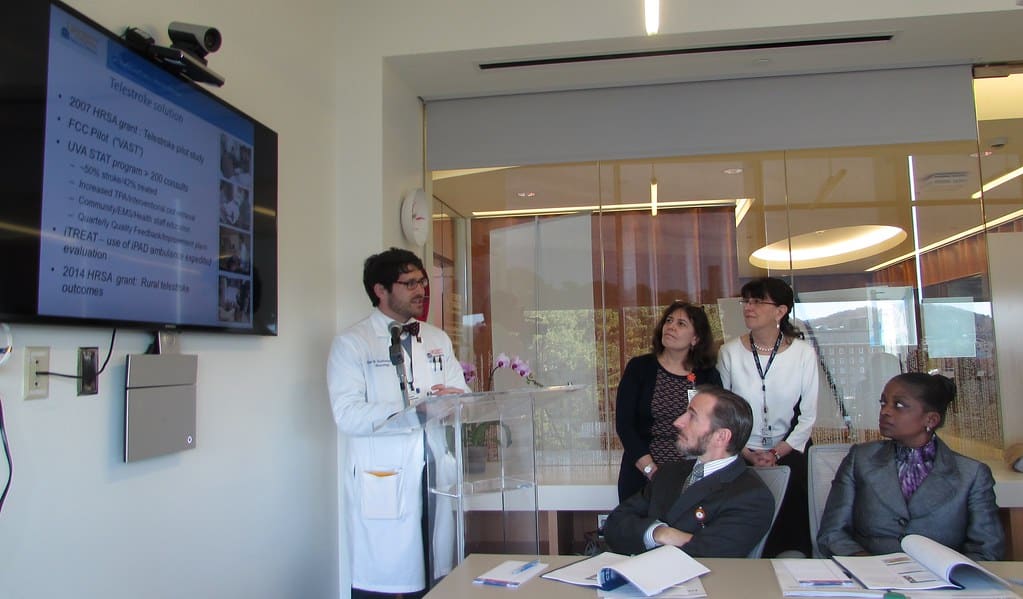HRSA Prepares Providers for End of Telehealth Flexibilities During COVID-19 PHE

WASHINGTON — The Department of Health and Human Services extended the COVID-19 public health emergency this week beyond the July 15 expiration to October.
The eventual expiration of the declaration will lead to changes in certain flexibilities granted to Medicare and Medicaid beneficiaries, especially when it comes to telehealth services.
“Following congressional action in Medicare, we have made telehealth payments permanent for behavioral health, for after the pandemic, including audio only,” said Meena Seshamani, deputy administrator at the Centers for Medicare and Medicaid Services, during the National Telehealth Conference hosted by the U.S. Health Resources and Services Administration.
“We have also added [and] adopted a policy to have services that are on our telehealth covered list. [That will] stay until the end of 2023 to give us more time to see what additional information and evidence we can find to say, okay, what can be continued within our Medicare statute,” said Seshamani.
On Jan. 31, 2020, former HHS Secretary Alex M. Azar II declared the COVID-19 public health emergency, and indicated that declaration could only be extended for 90-days at a time.
On April 16, HHS renewed the declaration through July 15 and advised that it would provide states 60 days’ notice in advance of ending the declaration.
CMS has allowed for certain telehealth flexibilities during the pandemic for Medicaid beneficiaries, which Seshamani said included making telehealth payments permanent for behavioral health visits, including audio only calls, and allowing individuals to access telehealth visits for behavioral health services across geographical barriers.
CMS discussed telehealth gains from these flexibilities and how providers can navigate the future telehealth flexibilities beyond the COVID-19 public health emergency, during the two-day, virtual National Telehealth Conference hosted by the U.S. Health Resources and Services Administration on Monday and Tuesday.
The event included leaders from the Centers for Disease Control and Prevention, behavioral health treatment specialists and other providers to discuss the telehealth lessons from the COVID-19 pandemic, as use in telehealth services spiked, especially for rural and minority populations.
“Certainly, the flexibilities that were enabled through the public health emergency led to a significant growth in telehealth [use],” said Seshamani.
According to Seshamani, nearly 63 million people are on Medicare in the U.S., and a report from HHS finds that in 2020 the telehealth utilization for people on Medicare increased 63-fold, with behavioral health having the largest increase in telehealth usage.
Telehealth gains were also made for Native American and Alaska Native populations from 574 federally recognized tribes spread out over 37 states.
Prior to the pandemic, all telehealth visits for Native American and Alaska Native populations made up less than 1% of total health care visits, but during the height of the pandemic telehealth made up 45% of all visits, according to data presented at the conference by a member from Indian Health Service.
“Utilization of telehealth actually found that Black and rural Medicare beneficiaries were less likely to use telehealth then their White and urban counterparts, and that is something that we need to take into consideration as we’re thinking about telehealth moving forward,” said Seshamani.
Adam Copeland, an associate bureau chief in the wireline bureau at the Federal Communications Commission, works on a number of initiatives relating to broadband deployment and infrastructure.
Copeland spoke during the HRSA conference about the Rural Health Care Program, which is made up of the Healthcare Connect Fund Program established in 2012, and the Telecommunications Program from 1997.
Among other things, the Rural Health Care Program provides eligible rural and non-rural health care providers that are members of a consortium a 65% discount on broadband connections.
“As you can imagine, given how large Alaska is … it can be extremely expensive to serve certain areas of Alaska and provide voice and data services,” said Copeland.
“The telecommunications program provides support to those rural health care providers, which are at this point predominantly in Alaska, to ensure that they are able to operate and provide health care in those remote areas,” continued Copeland.
Miriam Delphin-Rittmon, who serves as assistant secretary of Health and Human Services for Mental Health and Substance Use, said at the conference that during the COVID-19 public health emergency, SAMSHA took rapid actions to facilitate the use of telehealth, and drew upon flexibilities and exceptions for controlled medications.
In April 2020, SAMSHA exempted Opioid Treatment Programs from the requirement for the in-person physical exam for new patients being started on buprenorphine, and also permitted the use of telehealth for established programs in-place.
The same month, SAMHSA also supported other flexibilities, including the use of audio only technology and the allowance of non-HIPAA compliant technology.
“This audio only provision seeks to address the disparities in abundant access … Along with these flexibilities, SAMHSA provided extensive technical assistance through webinars such as using technology based therapeutic tools and behavioral health services,” said Delphin-Rittmon.
During the telehealth conference, Rochelle Walensky, director of the Centers for Disease Control and Prevention, detailed key telehealth initiatives the agency has launched to support providers.
Walensky said the CDC is currently using telehealth to collaborate with public and private partners to better understand antibiotic and prescribing practices associated with health visits compared to in-person visits, and for clinical decision support in electronic health records, and for audits and feedback on prescribing performance.
“This works really well on virtual platforms. It provides clinicians with time [for] prescribing support,” said Walensky.
The CDC is also using telehealth to examine long-term care trends, conduct health assessments for reduction control practices, understand the role of strong stewardship for both antibiotics as well as to combat antibiotic resistance, and evaluate data from sexually transmitted infection clinics.
“Especially in this moment where we’ve actually had unrelenting momentum in sexually transmitted infections,” said Walensky.
Walensky said that a data modernization initiative is underway at the CDC to automate telehealth systems to ensure interoperability.
“It’s going to take time and effort to get us there … But once it’s done, the ability to see these data and generate reports quickly, this is going to make the work of public health and healthcare providers faster and easier,” said Walensky.
Alexa can be reached at [email protected]























